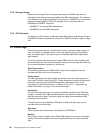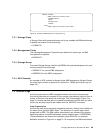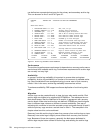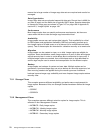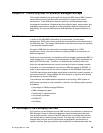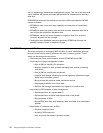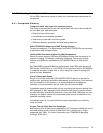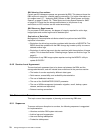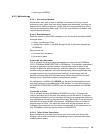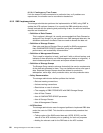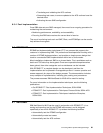
76 Storage Management with DB2 for OS/390
are not duplexed by the database management system. The use of fast write and
cache facilities will provide increased performance for databases and recovery
data sets.
DFSMS/MVS enhances the backup and recovery utilities provided by the DB2
system as follows:
• DFSMSdss uses concurrent copy capability to create point-of-consistency
backups.
• DFSMShsm backs up system data sets and end-user database data that is
less critical than production database data.
• DFSMShsm carries out direct migration to migration level 2 for archived
recovery data sets on disk storage.
• Testing/end user databases can be migrated by DFSMShsm through the
storage hierarchy, based on database usage.
8.3 SMS Management Goals
The aims and goals for managing SMS will differ for each installation, although
there are areas where working practices will have a common ground. These
areas can be categorized as follows:
• Positioning for future enhancements to both DFSMS/MVS and DB2.
• Improving the storage management of data:
• Use of SMS to simplify JCL allocation.
• Maintain support for disk and data storage growth without increasing
staff levels.
• Use of SMS to simplify data movement.
• Improve disk storage efficiency by increasing space utilization through
better use of allocation control.
• Bring private disk volumes under centralized control.
• Segregate production from other data.
• Reduce disk storage requirements by migration of inactive data.
• Improving the DB2 aspects of data management:
• Spread partitions for a given table/PI.
• Spread partitions of tables and indexes likely to be joined.
• Spread pieces of NPIs.
• Spread DB2 work files, and temporary data sets likely to be accessed in
parallel.
• Exploitation of hardware such as RVA.
• Physical striping of data.
• Avoiding UCB contention.
• Use only what disk space is actually needed.



